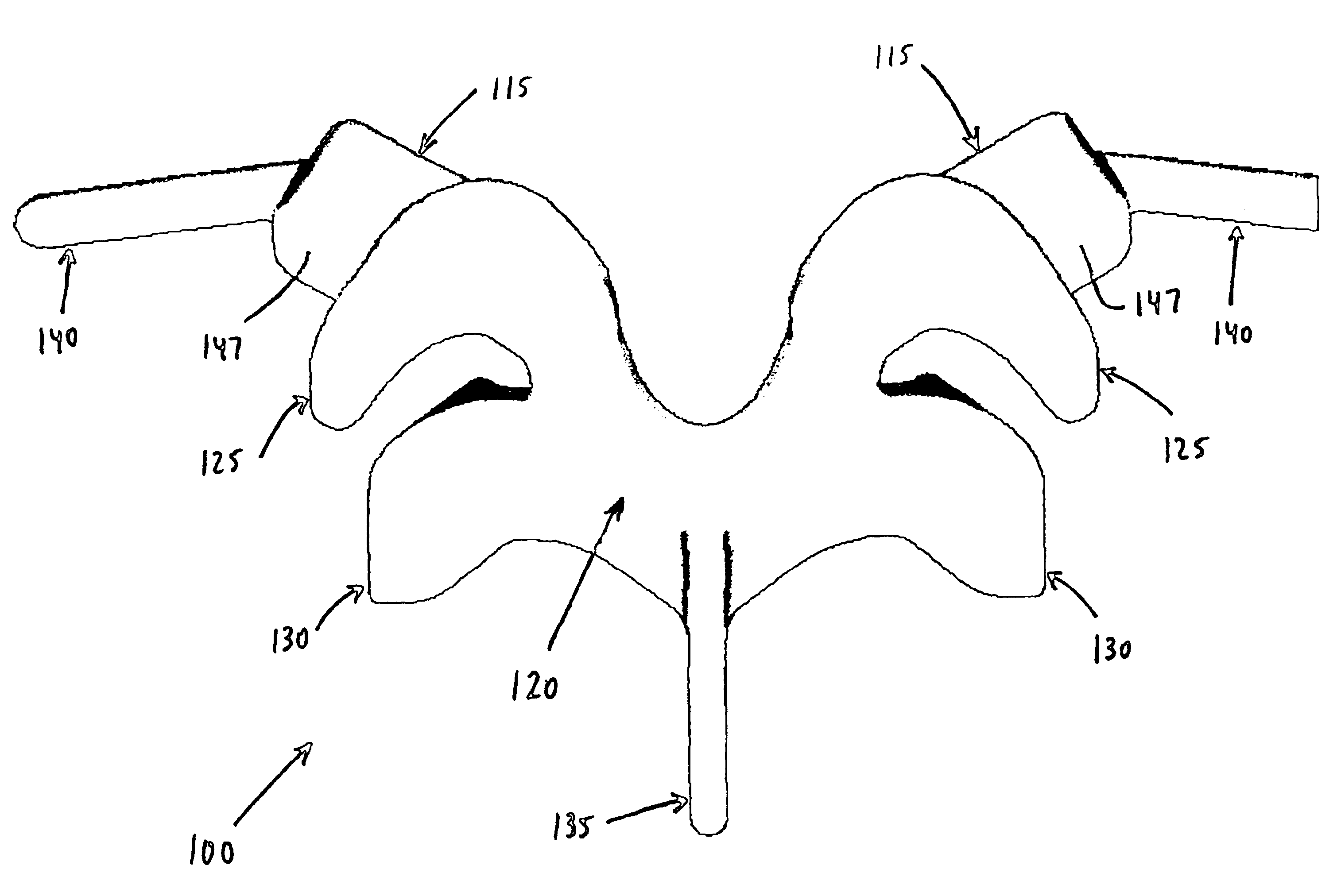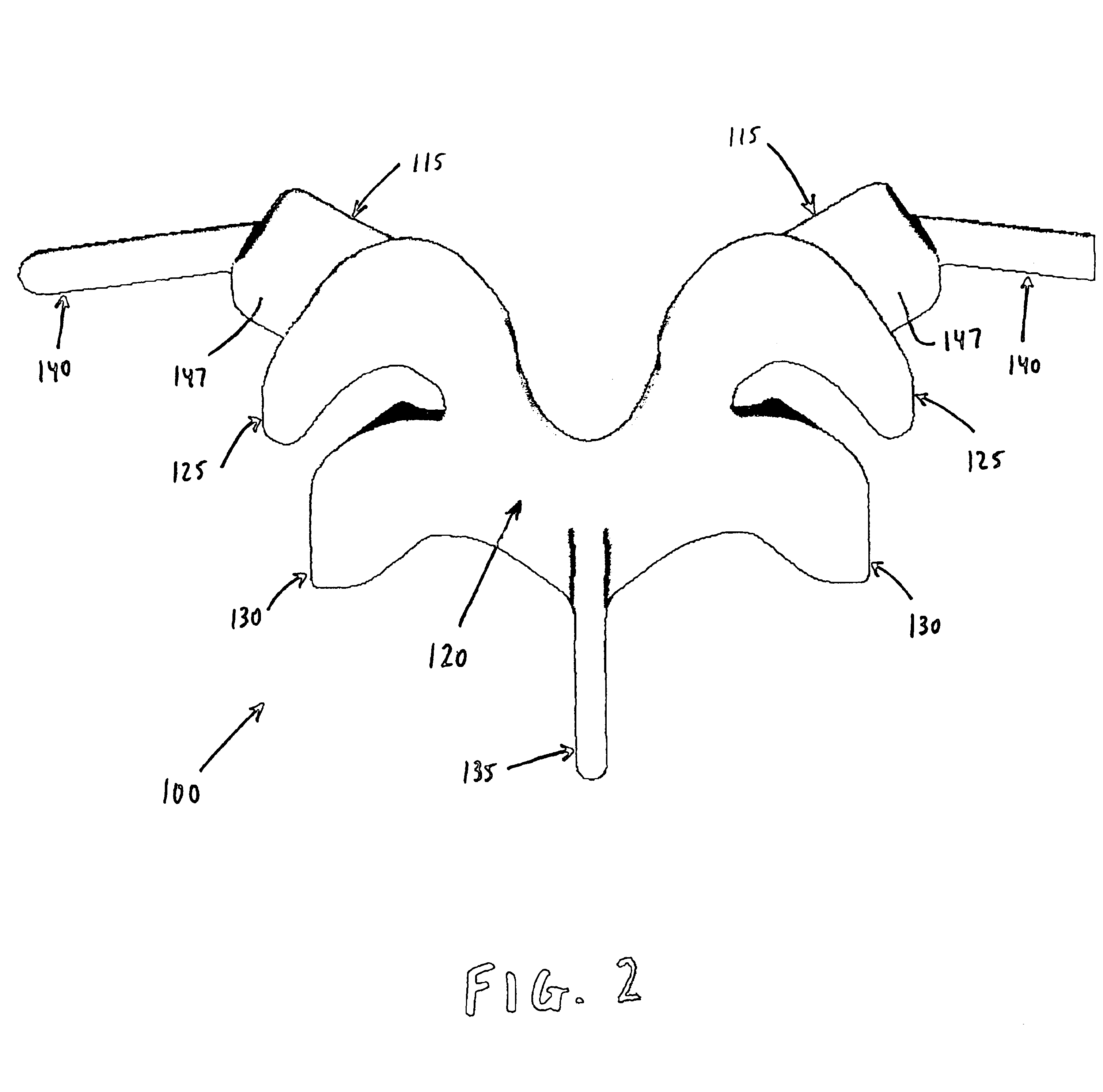Prosthesis for the replacement of a posterior element of a vertebra
a technology for posterior elements and vertebrae, applied in the field of surgical devices and methods, can solve problems such as limiting the range of motion, reducing function, and causing debilitating pain
- Summary
- Abstract
- Description
- Claims
- Application Information
AI Technical Summary
Benefits of technology
Problems solved by technology
Method used
Image
Examples
Embodiment Construction
[0056]Referring now to FIG. 1, there is shown a natural lumbar vertebra 5 comprising a natural vertebral body 10, a pair of natural pedicles 15 extending from natural vertebral body 10, a natural lamina 20 extending from natural pedicles 15, a pair of natural superior facets 25 extending from natural pedicles 15 and natural lamina 20, a pair of natural inferior facets 30 extending from natural lamina 20, a natural spinous process 35 extending from natural lamina 20, and a pair of natural transverse processes 40 extending from natural pedicles 15.
[0057]Looking next at FIGS. 2 and 3, there is shown a novel prosthesis 100 which is adapted to replace the natural lamina 20, the two natural superior facets 25, the two natural inferior facets 30, the natural spinous process 35, and the two natural transverse processes 40. To this end, prosthesis 100 comprises a pair of prosthetic mounts 115, a prosthetic lamina 120 extending from prosthetic mounts 115, a pair of prosthetic superior facets ...
PUM
 Login to View More
Login to View More Abstract
Description
Claims
Application Information
 Login to View More
Login to View More - R&D
- Intellectual Property
- Life Sciences
- Materials
- Tech Scout
- Unparalleled Data Quality
- Higher Quality Content
- 60% Fewer Hallucinations
Browse by: Latest US Patents, China's latest patents, Technical Efficacy Thesaurus, Application Domain, Technology Topic, Popular Technical Reports.
© 2025 PatSnap. All rights reserved.Legal|Privacy policy|Modern Slavery Act Transparency Statement|Sitemap|About US| Contact US: help@patsnap.com



